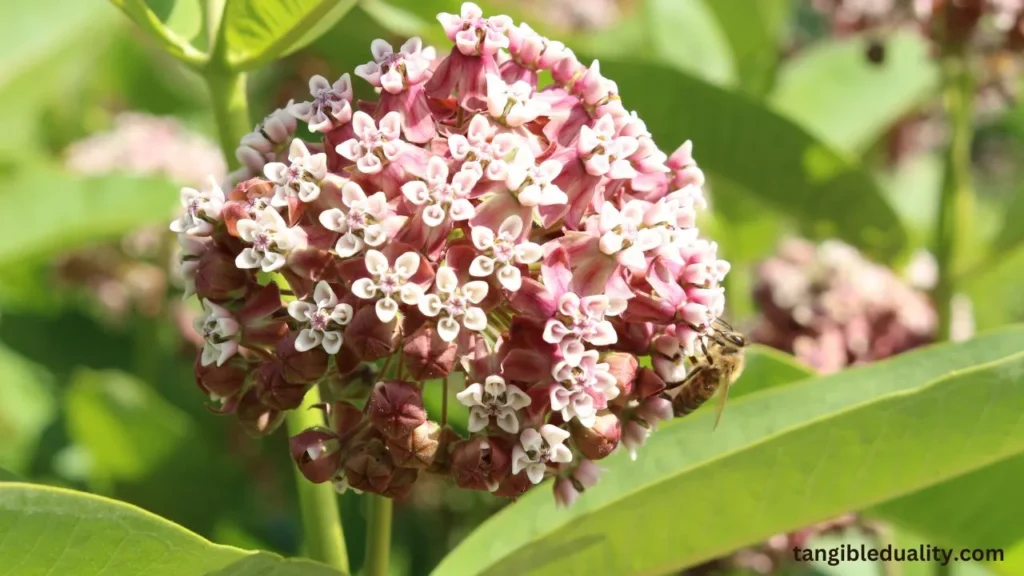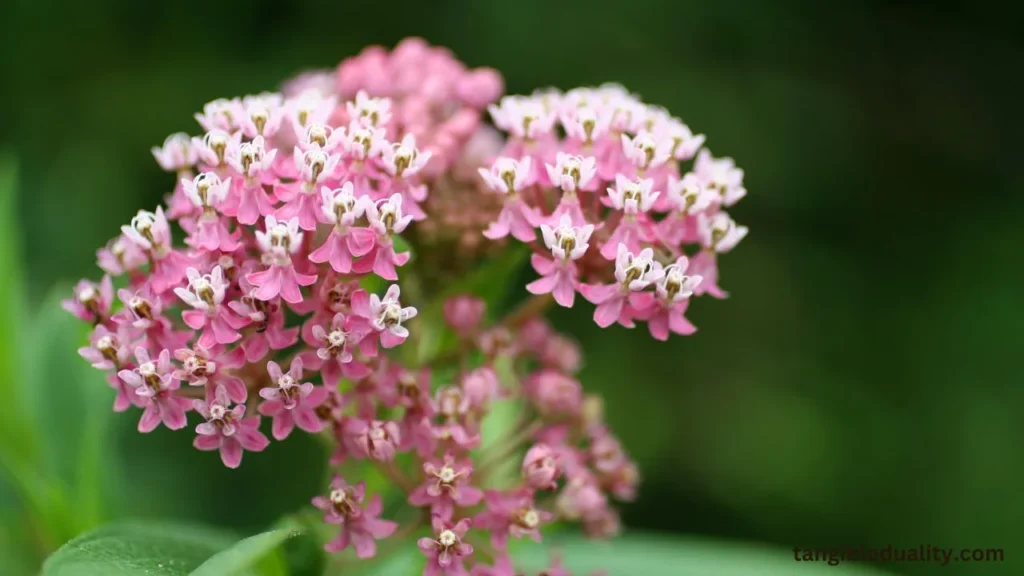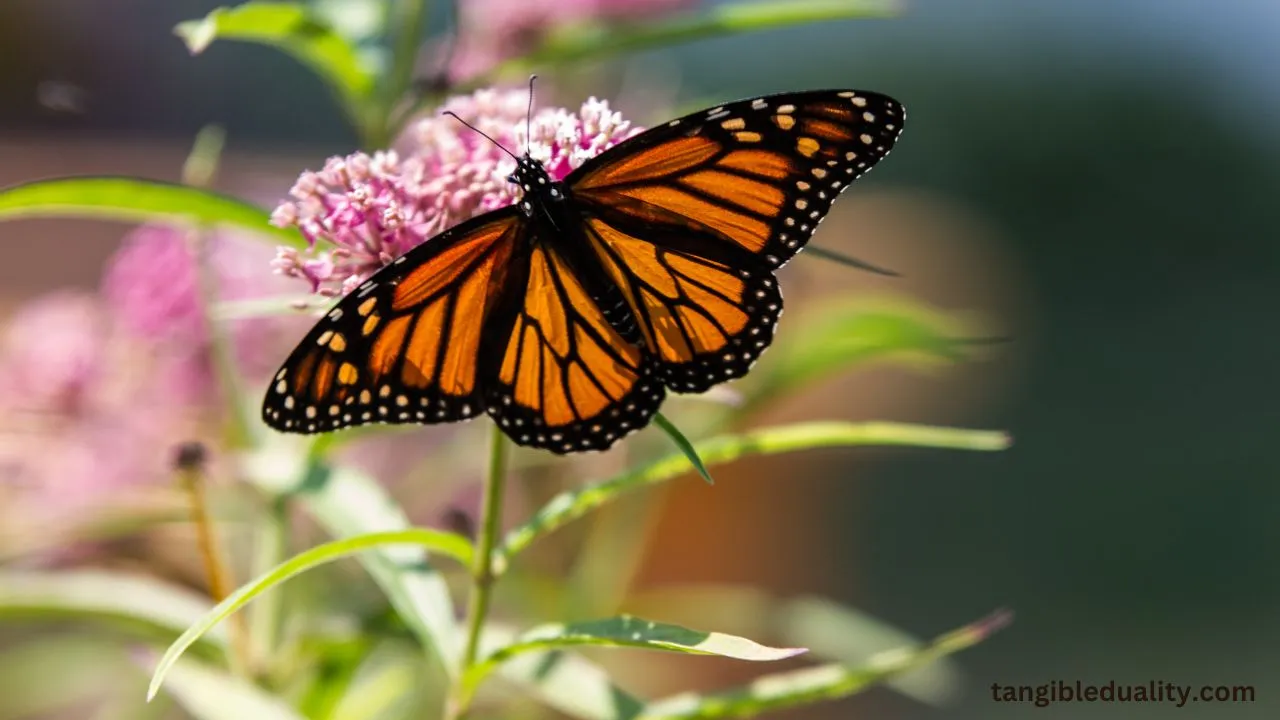Aphids can be a common source of annoyance when it comes to milkweed plants, which are an essential source of nutrition for monarch butterflies. Although aphids may appear innocuous, they pose a significant risk to these lovely creatures.
They consume the milkweed plant’s sap and have the potential to spread viruses. Eliminating aphids in a secure and timely manner is essential to protecting monarch butterflies and ensuring the health of your milkweed plants.
You are lucky since several techniques can efficiently eliminate aphid infestations without harming your garden’s monarch butterflies or other beneficial insects.
Natural predators and handmade soaps that kill insects are eco-friendly options that may help keep aphids at bay. You can provide a secure and wholesome habitat for monarch butterflies to flourish in if you take preventative steps and keep a close eye on your milkweed plants through frequent monitoring.
This post will investigate the various approaches that may be utilized to securely eliminate aphids from milkweed plants and offer advice on avoiding repeat infestations.
Allow us to collaborate to safeguard these vital pollinators and guarantee that the ecosystem will continue flourishing for everyone.
Aphids are small insects that can significantly harm milkweed plants, which are crucial for the survival of monarch butterflies. Understanding the impact of aphids on milkweed and how they affect monarch butterfly eggs and caterpillars is essential for maintaining a healthy ecosystem.

Why Are Aphids Harmful to Milkweed Plants?
Aphids can weaken milkweed plants by feeding on their sap and spreading diseases. This weakens the plant, making it less able to provide nourishment for monarch butterfly larvae. Additionally, honeydew excreted by aphids can attract other insects that may further harm the milkweed.
Impact of aphid infestation on milkweed
When aphids infest milkweed plants, they can reproduce rapidly and form large colonies. These colonies can drain the plant of essential nutrients, stunting its growth and making it more susceptible to other stressors.
How aphids affect monarch butterfly eggs and caterpillars
Aphids weaken milkweed plants and can directly harm monarch butterfly eggs and caterpillars. By competing for resources and space on the plant, aphids can reduce food availability for monarch caterpillars, potentially impacting their development and survival.
Identifying aphid damage on milkweed plants
Signs of aphid damage on milkweed plants include yellowing or curling leaves, stunted growth, and sticky honeydew on the leaves. Regularly inspecting milkweed plants for signs of aphid infestation is essential to taking timely action.
Identifying Aphids on Milkweed
Common types of aphids found on milkweed plants include the oleander and aphids. These tiny insects are usually bright yellow, making them easy to spot on the green leaves of milkweed plants. Physical characteristics of milkweed aphids include soft bodies and antennae.
Methods for spotting aphid colonies on milkweed plants
To detect aphid colonies on milkweed plants, look for clusters of tiny yellow bugs congregating on the undersides of leaves or new growth. Aphids multiply quickly, so it is essential to act promptly once identified to prevent further plant damage.
Natural Predators of Aphids on Milkweed
Encouraging beneficial insects in your garden can help control aphid populations on milkweed plants. Ladybugs and lacewings are natural predators of aphids and can be attracted to your garden by planting native plants and avoiding harmful pesticides.
Beneficial insects that prey on aphids
Ladybugs and lacewings are voracious predators of aphids and can significantly reduce aphid populations on milkweed plants. By providing a habitat for these beneficial insects, you can create a natural balance that helps control pests in your garden.
Encouraging natural aphid control in your garden
Various native plants can attract beneficial insects that feed on aphids. Avoiding chemical pesticides helps maintain a healthy ecosystem where natural predators can thrive and keep aphid populations in check.
Attracting ladybugs and lacewings to control aphid populations
Plant flowers such as dill, fennel, and yarrow to attract ladybugs and lacewings to your garden. These beneficial insects will help keep aphid populations under control without the need for harmful chemicals that can harm other beneficial insects.

Safe Methods to Get Rid of Aphids on Milkweed
When dealing with aphids on milkweed plants, it is essential to use safe and environmentally friendly methods to protect monarch butterflies and other beneficial insects. Using soapy water spray, organic pesticides, and pruning are effective ways to eliminate aphids without causing harm to the ecosystem.
Using soapy water spray to eliminate aphids
A simple and non-toxic method for getting rid of aphids is to spray them with water and mild soap. This solution suffocates the aphids, causing them to fall off the plant without leaving harmful residues that can harm other insects.
Organic pesticides for controlling aphids on milkweed
If natural predators cannot keep aphid populations in check, consider using organic pesticides specifically targeting aphids. These pesticides are derived from natural sources and are less harmful to beneficial insects and the environment compared to synthetic chemicals.
Pruning and removing heavily infested parts of milkweed plants
In severe aphid infestations, pruning and removing heavily infested parts of milkweed plants can help prevent the spread of aphids to healthy parts of the plant. Regularly inspecting milkweed plants for aphids and taking prompt action is critical to protecting the plants and the insects that rely on them.
Protecting Monarch Butterflies During Aphid Control
While controlling aphid populations on milkweed plants is essential, safeguarding monarch butterflies and their eggs is equally crucial. Implementing preventive measures and creating a balanced ecosystem can ensure the health and survival of monarch butterflies in your garden.
Ensuring the safety of caterpillars and butterfly eggs
Avoid harming monarch butterfly eggs and caterpillars when applying control methods for aphids. Scrutinize milkweed plants before taking action, and relocate any eggs or caterpillars to a safe location if needed.
Preventive measures to maintain a healthy milkweed habitat
Regularly inspecting milkweed plants for aphids and implementing preventive measures such as attracting natural predators can help maintain a healthy habitat for monarch butterflies. By creating a diverse and balanced ecosystem, you can minimize the need for intensive pest control methods.
Creating a balanced ecosystem for monarch butterflies and milkweed plants
By planting various native plants and providing habitat for beneficial insects, you can create a balanced ecosystem that supports milkweed plants’ growth and monarch butterflies’ survival. Avoiding harmful chemicals and embracing natural pest control methods can help protect these important pollinators.
Conclusion
A holistic approach is required to manage aphids on milkweed to conserve monarch butterflies effectively. This is because monarch butterflies are dependent on milkweed. This strategy involves emphasizing the health of both plants and insects.
We can serve several aphids while decreasing the harm to monarch caterpillars and other beneficial insects by employing natural therapies such as insecticidal soaps, neem oil, or helpful insect predators.
These are all examples of natural treatments. Additionally, the utilization of cultural measures such as slipping and the removal of substantially infested plants may assist in the containment of aphid epidemics.
A balanced environment supporting monarch butterflies and the plant that serves as their vital host can be accomplished by cultivating various native plants in the garden to encourage biodiversity. This may attract natural predators and produce an environment favorable to monarch butterflies’ survival.
There is a direct correlation between the intentional efforts that we have made and the maintenance of healthy milkweed populations, the preservation of habitats for monarch butterflies, and the contribution to the protection of these iconic creatures for future generations. All of these things are possible because of what
FAQs
- Q: What are aphids and why are they a problem on milkweed?
- A: Aphids are small insects that feed on plant sap, including milkweed. They are a problem on milkweed because they can weaken the plants and harm monarch butterflies and their caterpillars.
- Q: How can I identify oleander aphids on my milkweed plants?
- A: Oleander aphids are small, bright yellow insects that cluster on the stems and undersides of leaves of milkweed plants.
- Q: What are some natural predators of aphids that can help control their population?
- A: Ladybugs, wasps, and other beneficial insects are natural predators of aphids and can help control their population on milkweed plants.
- Q: How do yellow aphids on milkweed affect monarch butterfly eggs and caterpillars?
- A: Yellow aphids can damage milkweed plants, making them less suitable for monarch butterfly eggs to be laid on and for caterpillars to feed on.
- Q: What is the best way to get rid of aphids on milkweed without harming monarch butterflies?
- A: One safe method to remove aphids from milkweed is to spray them off with a strong stream of water or to introduce natural predators like ladybugs to control the population.
- Q: Can milkweed bugs also harm monarch caterpillars?
- A: While milkweed bugs do feed on milkweed sap, they do not typically harm monarch caterpillars. However, it is important to monitor their presence around milkweed plants.
- Q: How can I prevent aphids from infesting my milkweed plants in the future?
- A: To prevent aphids, you can regularly inspect your milkweed plants for signs of infestation, avoid over-fertilizing, and plant other beneficial flowers nearby to attract natural predators.

